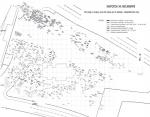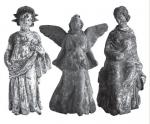Summary (English)
ARCHAEOLOGICAL EXPLORATIONS IN MESAMBRIA – MESEMVRIA (Anelia Bozhkova – aneliabozkova@yahoo.com, Petya Kiyashkina, Todor Marvakov) During the excavations 323 graves were explored: 14 graves from the Classical period (two from the 5th century BC and 12 from the 4th century BC), 133 from the Hellenistic period (21 cist graves), 12 ancient Greek graves, 161 Late Antique Christian graves and three unidentified. Six pits from the 13th – 14th centuries were discovered. The graves from the Classical period were burial pits with inhumations. The grave goods included lekythoi, gutti, terracotta figurines and protomai, bronze and silver jewelry. The graves from the Hellenistic period were burial pits and cist graves with cremations and inhumations. A square cist grave contained a bronze hydria which served as a funerary urn for the ashes. Another cist grave contained remains from a wooden sarcophagus. The grave gods included coins, jugs, unguentaria, pottery with the West Slope decoration, gold jewelry and terracotta figurines. The grave goods from the Late Antique Christian burials included bronze and silver belt buckles and points, earrings, finger-rings and glass beads. The necropolis, which was explored, contained 943 graves in total. The earliest burials dated to the middle of the 5th century BC. Some grave goods deserve attention: a terracotta relief showing Nereid and Hippocampus produced in the workshop of Melos and a lekythos showing the Amazonomachy in relief. Some changes in the mortuary practices occurred in the Hellenistic period: the cist graves and the cremation burials appeared, the unguentaria and the jugs replaced the lekythoi as the main funerary vessels, the Charon’s Obol became mandatory and gold jewelry appeared among the grave goods. The mediaeval necropolis dated to the 13th – 14th centuries.
- Anelia Bozhkova - Archaeological Institute with Museum
- Petya Kiyashkina - ‘Old Nesebar’ Museum
- Todor Marvakov - ‘Old Nesebar’ Museum
Director
Team
Research Body
- Archaeological Institute with Museum
- ‘Old Nesebar’ Museum






![Download [PDF]](/excavation/skins/fasti/images/results/download_sml.png)
